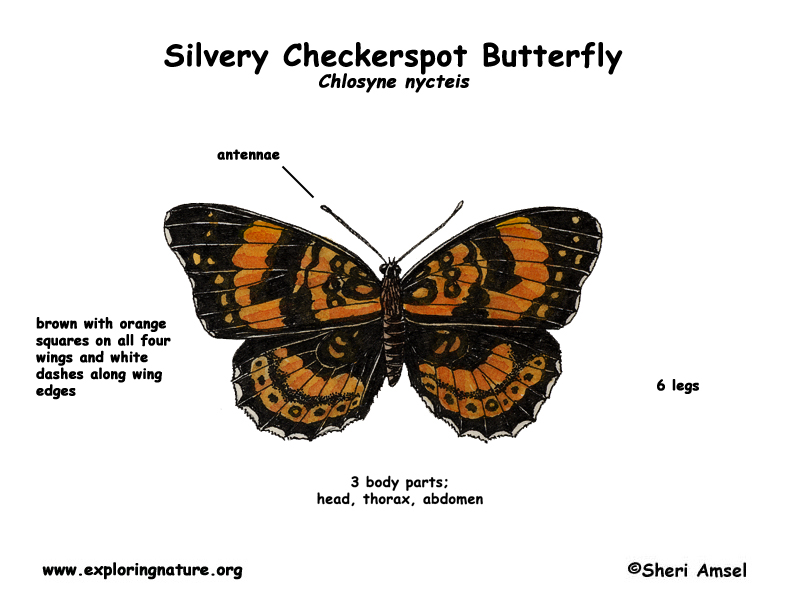

They are found in Canada, south into the U.S from Maine to North Carolina, west to the Rocky Mountains.
They are found along roads, lakes and meadows.
They are orange and black on all four wings and white dashes along wing edges. Wingspread is up to 2" wide. They look like many small butterflies, including the pearl crescent, so they can be hard to name for certain when in flight.
This is a butterfly of wetter areas, especially along the edges of streams. The males regularly patrol their territories with an alternating flapping and gliding flight.
The caterpillars eat sunflowers and black-eyed susans.
Females lay big groups of eggs on the underside of sunflower leaves.
Kingdom: Animalia
Phylum: Arthropoda
Class: Insecta
Order: Lepidoptera
Family: Nymphalidae
Genus: Chlosyne
Species: C. nycteis
When you research information you must cite the reference. Citing for websites is different from citing from books, magazines and periodicals. The style of citing shown here is from the MLA Style Citations (Modern Language Association).
When citing a WEBSITE the general format is as follows.
Author Last Name, First Name(s). "Title: Subtitle of Part of Web Page, if appropriate." Title: Subtitle: Section of Page if appropriate. Sponsoring/Publishing Agency, If Given. Additional significant descriptive information. Date of Electronic Publication or other Date, such as Last Updated. Day Month Year of access < URL >.
Amsel, Sheri. "Butterfly (Silvery Checkerspot)" Exploring Nature Educational Resource ©2005-2024. December 13, 2024
< http://exploringnature.org/db/view/Butterfly-Silvery-Checkerspot >

